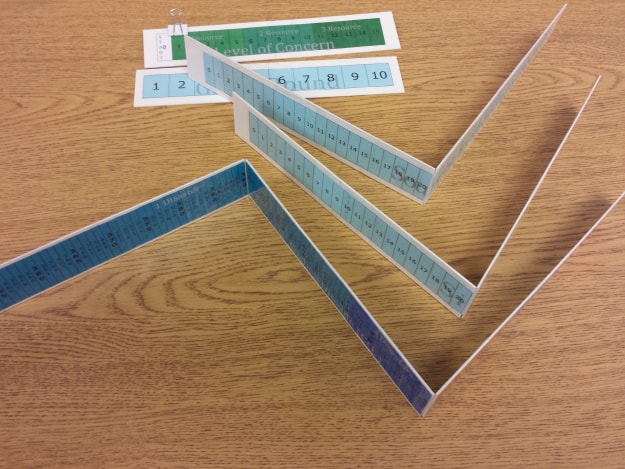Gameplay in the Classroom
Submitted by Michael Fryda on Mon, 2015-06-29 15:47 Prototype Meters for gameplay in the classroom.
Prototype Meters for gameplay in the classroom.
Happy Summer, readers of Spielbound.org!
I hope that all of the teachers in the audience are recharging their batteries for next school year. But, if we're honest, many teachers are spending at least part of their summer making enhancements to their curricula. I'm no exception.
This summer I'm spending several weeks designing, writing, and building a game for my classroom. Why do this from scratch? I have several reasons that I want to share.
The beauty of incorporating gameplay into a classroom is that there is no one "right" way to do it, so long as a teacher has an educative rationale. Maybe you'll use a game purchased at a discount through Spielbound to help students keep their math proficiency sharp. Maybe you need a historical game to really help students do some deep thinking about the expansion of railroads during the Industrial Revolution or help them think about city planning. If a pre-existing game fits your objectives, go for it! Unfortunately, there aren't always games that fit all objectives and this is where I am taking matters into my own hands. This helps me target the exact ideas that I need to make good use of my curricular time, and also gives me the freedom to write the game with the needs of my own students in mind.
I have a few objectives in my science classroom that I'm trying to help students meet and exceed. The topic is global climate change, a set of required Nebraska State Standards for my science class. Students need to understand the wide body of evidence and ethical dilemmas surrounding the study of this scientific fact. I also want to use this as an opportunity to practice rich thinking in cooperation with their peers. Students can use those interactions to develop breadth and depth in their construction of understanding. Those are big goals, to be sure, but calculated risks are what drive really rich learning. I've already put about ten days in. So where did I start?
